Discover Chachapoyas Tour - 5 Days






 View All PhotosView All Photos
View All PhotosView All PhotosCultural
Moderate
Chachapoyas, Kuelap
Hiking / Trekking, Archaeological / Architecture, Local producers, Nature
cardinfo-price-per-adult
| cardinfo-text-5 | ||
| cardinfo-text-7 | Not included | |
| cardinfo-text-8 | cardinfo-not-included | |
cardinfo-text-10
h2-title-1
For a long time, the charming northern Peruvian city of Chachapoyas remained relatively isolated from the rest of the country. That has changed in recent years, with the development of scheduled flights to Jaén to the northwest, and to Chachapoyas itself. And that’s great news for travelers because Chachapoyas and the surrounding region are absolutely brimming with manmade and natural attractions.
Our five-day tour will take you to some of the most amazing attractions around Chachapoyas and the Amazonas Region. These include the cliff-face sarcophagi at Karajia, Gocta Waterfall, and the vast and imposing Kuelap Fortress. These are some of the most amazing parts of Northern Peru to see when you visit Peru.
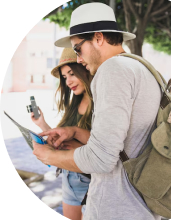 Free Brochure
Free BrochureReady to explore? Download the brochure and start planning!
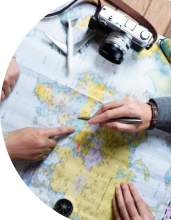
Your FREE travel expert is just a click away
Or Call us now! (888) 803 8004
h2-title-2
Day 1:Jaen to Chachapoyas
We’ll meet you as you arrive at the airport in Jaén*, where we’ll stop for lunch before heading to Chachapoyas by private transport, which takes about four hours. During this beautiful journey, we will descend into the Marañon River Valley (the Marañon is a major tributary of the Amazon River) before climbing upwards towards Chachapoyas through the stunning Utcubamba Canyon. As we drive through the canyon and on to Chachapoyas, you’ll see numerous waterfalls as they plunge down over the vertical walls, passing craggy rocks dotted with orchids and other flora native to this region. When we arrive in Chachapoyas, we’ll take you to your hotel (not included), where you can settle in before heading to one of the city’s many excellent restaurants for dinner (not included).
*Depending on flight schedules, it may be possible to fly directly from Lima to Chachapoyas.
- Meals: Boxed Lunch
- Tour Guide: Local Tour Guide: English/Spanish
- Transfer In: Jaen to Chachapoyas
Day 2:Gocta Waterfall
We will collect you from your hotel bright and early, and head out on a scenic drive, you'll arrive at Cocachimba, a charming village where your trek to the awe-inspiring Gocta Waterfall begins. With a staggering drop of 771 meters, Gocta is one of the highest waterfalls in the world, ranking third only to Angel Falls in Venezuela and Tugela Falls in South Africa. The trek to the base of the waterfall takes you through the lush, verdant rainforest, offering glimpses of exotic wildlife and stunning flora. After approximately 2.5 hours, you'll reach the base of the waterfall, where you can marvel at its beauty and power. Return to your hotel (not included) in Chachapoyas, feeling exhilarated by the natural wonders you've witnessed.
- Meals: Boxed Lunch
- Tour Guide: Local Tour Guide: English/Spanish
- Excursion: Gocta Waterfall
- Entrance Fee: Gocta Waterfall
Day 3:Karajia and Quiocta
Today we will head out to see the sarcophagi of Karajia standing on ledges on the cliff face above you. These human-shaped figures represent one form of burial used by the Chachapoya culture, which ruled this part of Peru from around 900 to 1470. The figures are unusually large, the seven main sarcophagi standing up to 2.5 meters tall and constructed of clay, sticks, and grass. They stand looking out toward the rising sun. Their location on a largely inaccessible cliff has protected them from looters, something the ancient Chachapoya likely took into consideration when they put them there. Each sarcophagus contains a mummy, with various artifacts, some precious, accompanying them. They were likely elite members of the Chachapoya civilization.
We will enjoy a boxed lunch before visiting the Quiocta Caverns, home to stunning stalactites and stalagmites. We will then return to Chachapoyas, reflecting on the rich history and natural beauty you've encountered on your Peru adventure package.
- Meals: Boxed Lunch
- Tour Guide: Local Tour Guide: English/Spanish
- Excursion: Karajia and Quiocta Caves
- Entrance Fee: Karajia and Quiocta Caves
Day 4:The Fortress of Kuelap
In the morning we’ll drive to the village of Tingo where we’ll board the cable car for a fun ride across a canyon up to Kuelap Fortress. After a short walk, we’ll arrive at this hugely impressive archaeological site.
While not nearly as famous as Machu Picchu, Kuelap is arguably just as impressive – that’s why it’s often called “The Machu Picchu of Northern Peru.” The comparison is perhaps a little unfair, as the two sites are very different in both their histories and their structure.
Kuelap was built by the Chachapoyas culture in the 6th century AD, some 500 years before Machu Picchu. It sits at 3,000 meters (9,900 feet) above sea level on a ridge overlooking the Utcubamba Valley, a commanding presence watching over the surrounding area. As you approach the fortress, you’ll undoubtedly be impressed by the towering outer walls, which reach 20 meters tall in places. The entire oval-shaped complex is about 584 meters long and 110 meters wide at its widest part. It is believed that it took about 40 million cubic feet of stone to build the gargantuan fortress, making it possibly the largest known ancient stone structure in South America, and three times larger than the Great Pyramid of Egypt.
As we walk around the near-impenetrable outer walls, we’ll eventually reach one of the three extremely narrow entrances into Kuelap. These provided excellent defense against potential invaders. As you walk up the narrow stairway, you can imagine how tough, and how brutal, it would have been for any attackers trying to force entry through these tight stone passages.
At the top of the entranceway, you’ll step up onto a tranquil plateau inside the fortress walls. As you do so, you’ll understand why the term “fortress” doesn’t quite do Kuelap justice. It was more like a walled city or citadel, capable of supporting thousands of people. Inside the fortress are the remnants of more than 400 circular dwellings, some of which have been restored to how archaeologists believe they would have looked hundreds of years ago. These dwellings are decorated with strange zigzag motifs and rhomboid friezes, the symbols possibly representative of the families who lived within. Passing through a lightly wooded area inside the complex, where orchids grow and hummingbirds flitter about, we’ll explore the rest of the complex, including religious buildings, defensive towers, and a strange construction that might have been used as a solar observatory.
There’s plenty to see at Kuelap, so we’ll make sure you have plenty of time to explore with your guide and then on your own. When you’re ready, we’ll return to our private transport and head back to Chachapoyas.
- Meals: Lunch
- Tour Guide: Local Tour Guide: English/Spanish
- Excursion: Kuelap Archaeological Site
- Entrance Fee: Kuelap Archaeological Site
Day 5:Chachapoyas to Jaen
After an early breakfast, we will leave Chachapoyas and return to Jaén, from where you can fly back to Lima. Reflect on the incredible experiences you've had during your time in northern Peru, knowing that the beauty and magic of this region will stay with you forever.
- Meals: Boxed Lunch
- Transfer Out: Chachapoyas to Jaen
h2-title-3
Secure your spot on the trip now with our real-time availability information.
Act quickly—these spots sell out fast!
h2-title-4
whats-included-title
- Transport: Private.
- Your Journeys Highlight Moment: Gocta Waterfalls, Sarcophagi at Karajia, Kuelap, Chachapoyas.
- Meals: 4 boxed lunches, 1 lunch.
- Entrances fees.
- Daily activities and excursions as described in the itinerary
- First aid kit, if you are taking any medications, please bring your prescription with you.
- Professional Guided Tour ENG/SPA.
- 24/7 support and emergency line are available throughout the itinerary.
whats-not-included-title
- International/Domestic Flights.
- Medical and emergency evacuation insurance.
- Trip cancellation insurance or any other travel insurance.
- Any activity not described in What's Included.
- Meals and drinks that are not specified on the itinerary.
- Tips/Gratuities.
h2-title-5

specialist-box-title
Natividad Cortez
specialist-box-phrase
top-tours-title
top-tours-info

Trek Along the Inca Trail To Machu Picchu
7daysTrek Along The Inca Trail To Machu Picchu with Valencia Travel. We are a renowned Peruvian tour company offering trekking experiences throughout Peru.
card-type-tagAdventure
card-activity-tagModerate - Demanding

Classic Peru Trip
7daysValencia Travel's classic Peru trip is a bucket-list adventure. This 7 Day trip will take you on unforgettable experiences throughout the Peruvian heartland.
card-type-tagCultural, Gastronomy
card-activity-tagEasy

Classic Inca Trail
4daysThe Inca Trail trek to Machu Picchu is the ultimate bucket list hiking experience! Join us on this Classic 4 Day & 3 night Inca Trail Hike!
card-type-tagAdventure
card-activity-tagModerate - Demanding
asso-info-title
asso-info-description
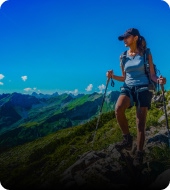 Aventure
Aventure
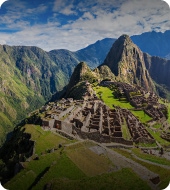 Cultural
Cultural
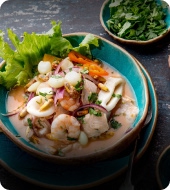 Gastronomy
Gastronomy
 Wellness
Wellness
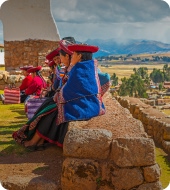 Local Living
Local Living
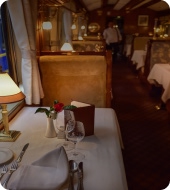 Luxury
Luxury












































